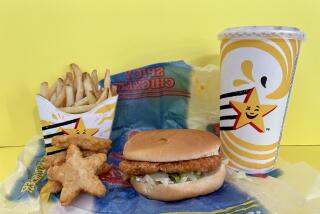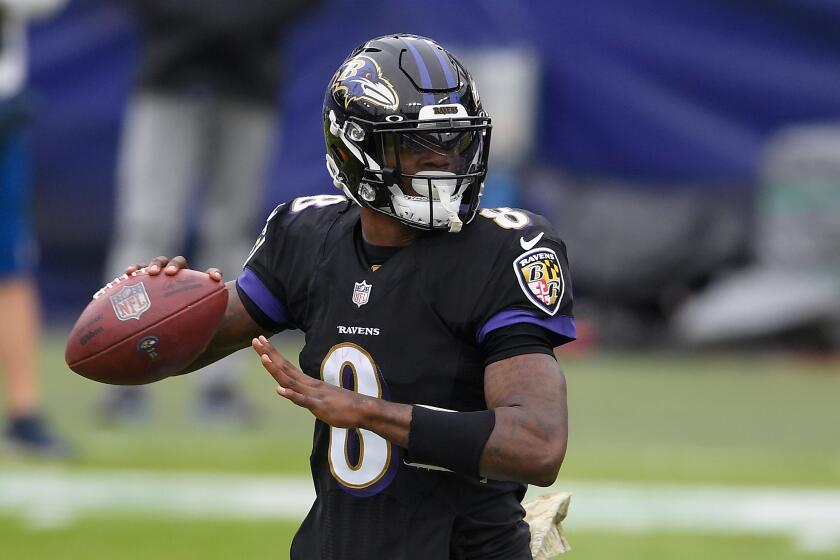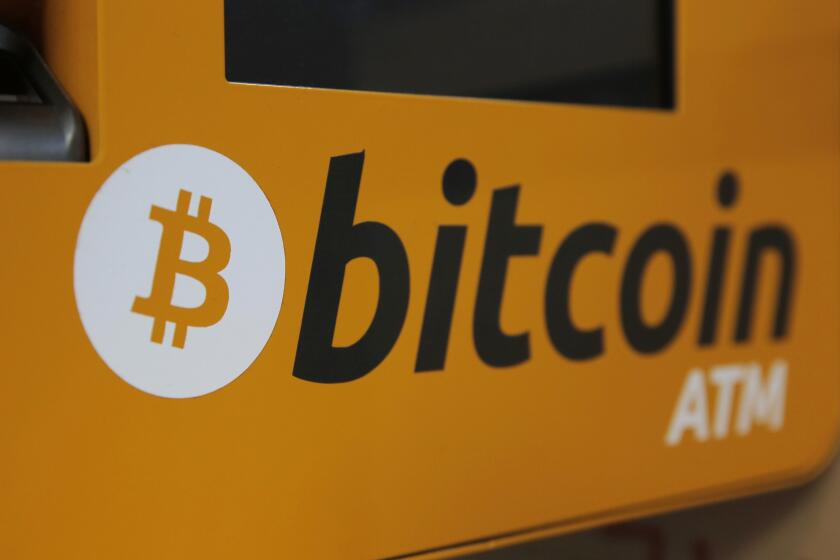Some dollar-menu items are passing the buck
Craving a burger off a fast-food dollar menu? Chances are that it now costs more than a buck.
Customers are still reeling from McDonald’s move last week to update its Dollar Menu, which for more than a decade offered burgers, fries and other items for less than a dollar apiece. The menu accounts for as much as 14% of the chain’s overall U.S. sales.
But soon, the list will morph into what’s being called the Dollar Menu & More, which mixes the standard $1 items in with $2 goods and $5 shareable family meals designed to, as McDonald’s puts it, “fill the need for choice, flexibility and other preferences.”
The fast-food behemoth isn’t the only one ditching the traditional dollar deal.
Rising costs and changing tastes are pushing prices past the buck barrier. In a quick-service market overrun with more upscale outlets and foodies seeking premium ingredients, the dollar deal may be doomed.
In January, Wendy’s 99-cent bargain menu transformed into Right Price Right Size and includes items that cost as much as $2 each. At Burger King, the changing value menu recently included a limited-time $1.29 Whopper Jr. deal. And Arby’s this spring introduced a menu called Snack ‘n Save, with baked potatoes, chocolate molten lava cake and other products that top out at $3.
“The dollar menu will have to evolve,” said John Gordon, founder of Pacific Management Consulting Group. “If you talk dollar too much, it erodes the customer’s perception of you over time — you don’t find a Maserati for a dollar.”
Some experts say there’s little economic incentive for chains to continue offering dollar meals, which are less profitable than beverages or limited-time promotional items.
More chains are experimenting with pricing, offering different tiers of deals instead of a flat menu of super-cheap options. Restaurants have raised prices to cover increasing food and other costs, hoisting some favorites out of dollar territory.
In the last three years, the number of menu items priced at $1 or less plunged 26% at quick-service restaurants, according to a report from the research firm Mintel.
And one-buck menus might not survive looming legislative changes, analysts said. Many fast-food outlets have warned that impending healthcare reforms will squeeze their already slim margins, possibly forcing more price hikes.
Dollar menus could face additional pressure from higher worker pay. In late September, California Gov. Jerry Brown signed off on raising the minimum wage in the state to $10 an hour from $8 by Jan. 1, 2016, a move that analyst Gordon said probably will push the quick-service industry to raise the lowest prices to $1.99 from 99 cents.
“In California, you’re not going to see dollar menus for long in the big chains,” Gordon said.
At least not in their traditional forms. Value menu makeovers are rampant as restaurant chains try to reverse a slide in popularity.
Budget menu orders at fast-food outlets tanked 12% in 2011 and 7% last year, according to NPD Group Inc. Demand for combo meals slid 13% in the last five years.
Customers are turning away from cut-rate cuisine in part because it isn’t as cheap as it used to be, analysts said. But also, consumers have begun questioning the quality of budget menus, which seldom include fruits and vegetables.
Health researchers who blame fast food for a plethora of ailments, including diabetes and obesity, have become more vocal in arguing that value menus make such meals even more accessible. Low-income consumers who can’t afford more nutritious items are especially vulnerable, such experts say.
Some formerly loyal customers such as Aesha Adams Roberts would now rather buy a bag of dried beans for dinner than order a 99-cent entree.
The Ventura stay-at-home mom, 35, once was proud of her ability to save money using value menus. But after a bout of illness while pregnant, she converted to organic food.
“Dollar menus are horrifying to me now,” she said. “They may be budget friendly, but the food is just really bad.”
McDonald’s is trying to lure back Roberts and health-minded patrons. In its largest markets, the chain plans to offer side salads, fruit or vegetables as alternatives to French fries in value meals.
Other chains are tapping into the stunt-eating and convenience-seeking demographics to boost their bargain and combo offerings. Burger King this summer debuted a $1 burger stuffed with French fries, which it touts as “new twists on American classics.”
KFC this month unveiled a patented container called the Go Cup targeted at consumers increasingly eating small snacks behind the wheel. The container, which is tapered to fit in a car’s cup holder, contains seasoned potato wedges and a choice of chicken for less than $3.
KFC may be on the right track. A key quality that draws customers to fast food — its convenience — is still available sans dollar menus, said William McCarthy, professor of health policy and management at UCLA.
“Economics is only part of what contributes to people’s decisions to eat fast food,” he said. “As appealing as the low cost is, the time cost is even more important if you ask me. Fast-food places will not lose too many customers if they do away with dollar menus.”
Taco Bell, however, is still charging ahead. The Mexican-style chain is testing a menu called Cravings in Sacramento and Kansas City, Mo., including 12 items for $1 each. It could replace the current Why Pay More menu if rolled out throughout the chain later this year.
“This is an industry that’s in a state of flux,” NPD analyst Bonnie Riggs said. “It’s going to be a real battle for market share. They are all trying different ways to drive traffic.”
Twitter: @tiffhsulatimes
More to Read
Inside the business of entertainment
The Wide Shot brings you news, analysis and insights on everything from streaming wars to production — and what it all means for the future.
You may occasionally receive promotional content from the Los Angeles Times.











